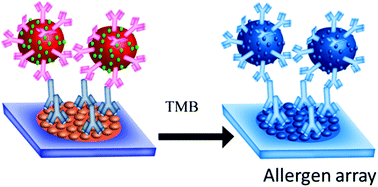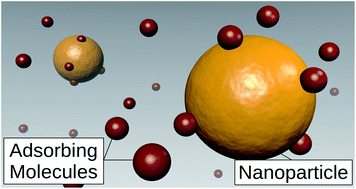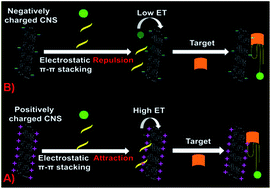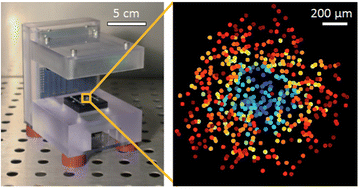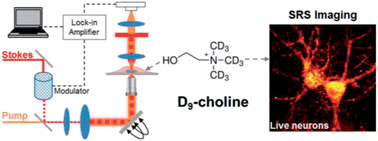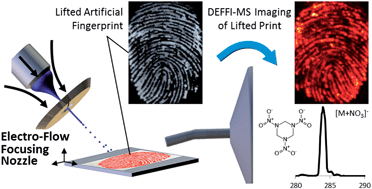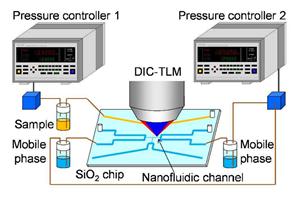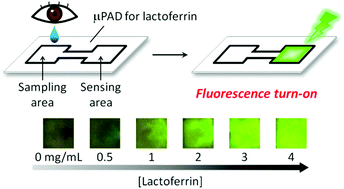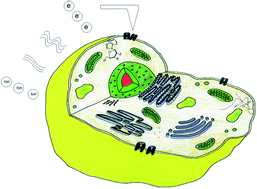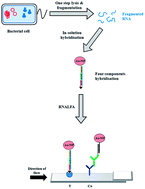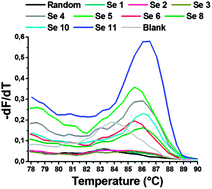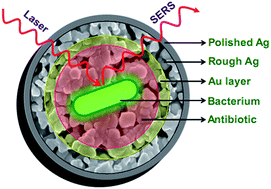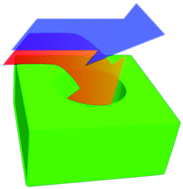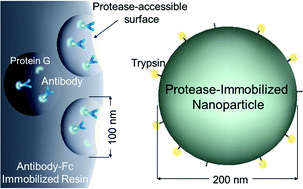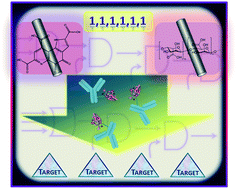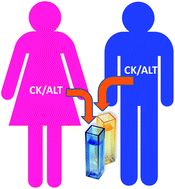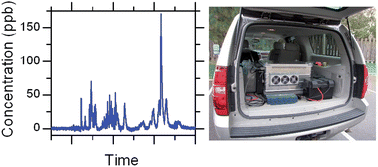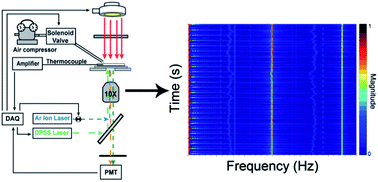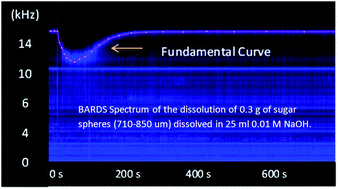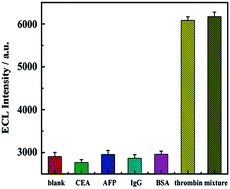Take a look at our new HOT articles just published in Analyst and free for you for the next couple of weeks:
Electrochemiluminescence resonance energy transfer between graphene quantum dots and gold nanoparticles for DNA damage detection
Qian Lu, Wei Wei, Zhenxian Zhou, Zhixin Zhou, Yuanjian Zhang and Songqin Liu
Analyst, 2014, Advance Article
DOI: 10.1039/C4AN00020J, Paper
A lateral flow paper microarray for rapid allergy point of care diagnostics
Thiruppathiraja Chinnasamy, Loes I. Segerink, Mats Nystrand, Jesper Gantelius and Helene Andersson Svahn
Analyst, 2014, Advance Article
DOI: 10.1039/C3AN01806G, Paper
Nanoparticles in sensing applications: on what timescale do analyte species adsorb on the particle surface?
Enno Kätelhön and Richard G. Compton
Analyst, 2014, Advance Article
DOI: 10.1039/C4AN00363B, Paper
The use of EEM fluorescence data and OPLS/UPLS-DA algorithm to discriminate between normal and cancer cell lines: a feasibility study
Ana Carolina de Oliveira Neves, Raimundo Fernandes de Araújo Júnior, Ana Luiza Cabral de Sá Leitão Oliveira, Aurigena Antunes de Araújo and Kássio Michell Gomes de Lima
Analyst, 2014, Advance Article
DOI: 10.1039/C4AN00296B, Paper
Enhancing permanganate chemiluminescence detection for the determination of glutathione and glutathione disulfide in biological matrices
Zoe M. Smith, Jessica M. Terry, Neil W. Barnett, Laura J. Gray, Dean J. Wright and Paul S. Francis
Analyst, 2014, Advance Article
DOI: 10.1039/C4AN00255E, Paper
Mass spectrometric investigation of the role of the linking polypeptide chain in DNA polymerase I
Taeho Yeom, Jungyoon Lee, Seonghyun Lee, Sunah Kang, Kyung Rok Kim, Byungwoo Han, Hyun Soo Lee and Kyubong Jo
Analyst, 2014, Advance Article
DOI: 10.1039/C4AN00107A, Paper
Optimizing detection of RDX vapors using designed experiments for remote sensing
Robert G. Ewing, Alejandro Heredia-Langner and Marvin G. Warner
Analyst, 2014, Advance Article
DOI: 10.1039/C4AN00125G, Paper
Mixed hydrogel bead-based tumor spheroid formation and anticancer drug testing
Yaolei Wang and Jinyi Wang
Analyst, 2014, Advance Article
DOI: 10.1039/C4AN00015C, Paper
Carbon nanobelts as a novel sensing platform for fluorescence-enhanced DNA detection
Xuping Sun, Zhicai Xing, Rui Ning, Abdullah M. Asiri and Abdullah Y. Obaid
Analyst, 2014, Advance Article
DOI: 10.1039/C3AN02364H, Communication
To view these article for free, please register for a free RSC account here



